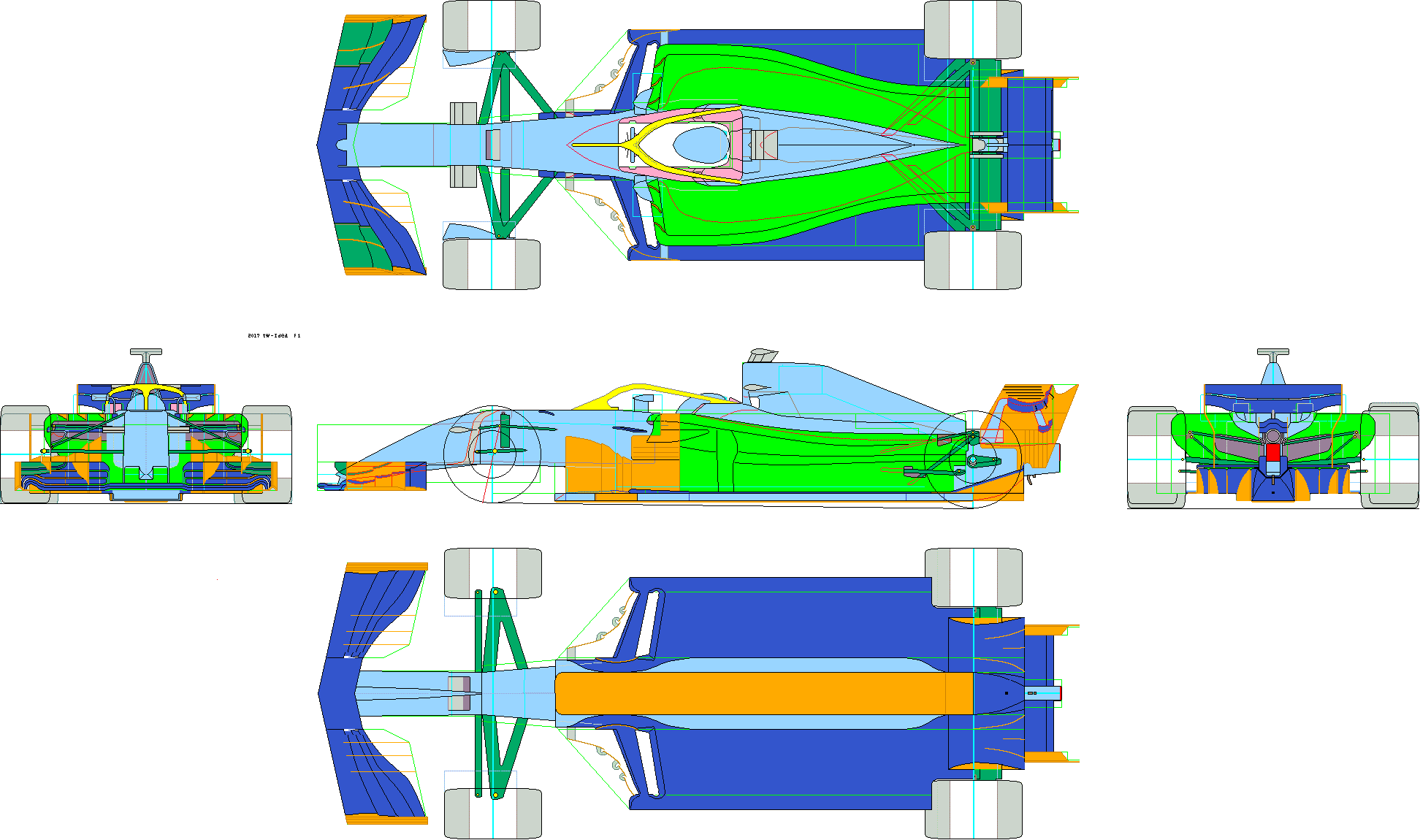(Japanese language)
F1 machine aerodynamic design for 2018 version by tw
Design day: from summer to 7th December 2017
Web release date: Thursday, December 07, 2017
It is F1 machine aerodynamic design CG of my specification which I will design next year.
He is wearing a head protection "halo" which is introduced from the next season.
In order to reduce the stall of the airflow toward the back, small protrusions were provided on the upper side of the halo.(Top view)
However, with "Hello" devices, you can not prevent Massa accident happened in the 2009 Hungarian qualifying.
I think the wind screen is the best for head protection. In fact, military fighters can do with it.
In the free practice of the British GP this year, Ferrari 's Vettel tested the windscreen, but on lap 1 he appealed to his vision and returned to the pit.
He got dizzy. But is not it F1 technology to improve it?
Well, CG of this time did not print out the F1 machine design template, but drew it with all 100% CG.
It is on the road with Windows paint software.
The green and blue lines in the figure below indicate the area of the bodywork regulation or the area of restriction.
Even in this work, I devoted myself to supplying high speed air current to the top of the diffuser.
This is because the upper surface of the wing only acts on the atmospheric pressure near infinity, whereas the lower surface of the car body is close to the road surface and generates a ground effect.
(Front: 1.2 to 2.0 mm / rear: 5.5 to 6.5 mm)
Like Mercedes, lowering the rear part of the side pod increases the efficiency of the rear wing.
However, a much more important factor is to increase the efficiency of the diffuser on the bottom of the car body, thereby improving the aerodynamic performance of the vehicle. This is my thought.

From the concept of raising the upper arm of the front wheel, the steering rod was laid out at the same height as the lower arm.
It is mine who invented the nose hall, but suck it from the underside and take it upward.
This has the effect of reducing the growth of the boundary layer under the nose.
The design of the side deflector is as you saw the existing F1 machine.
The upper row is behind and short in the front and rear, the middle row has a straight shape, and the lower row skips the air current to the left and right. This is the current F1 standard.
[ Home page ]
